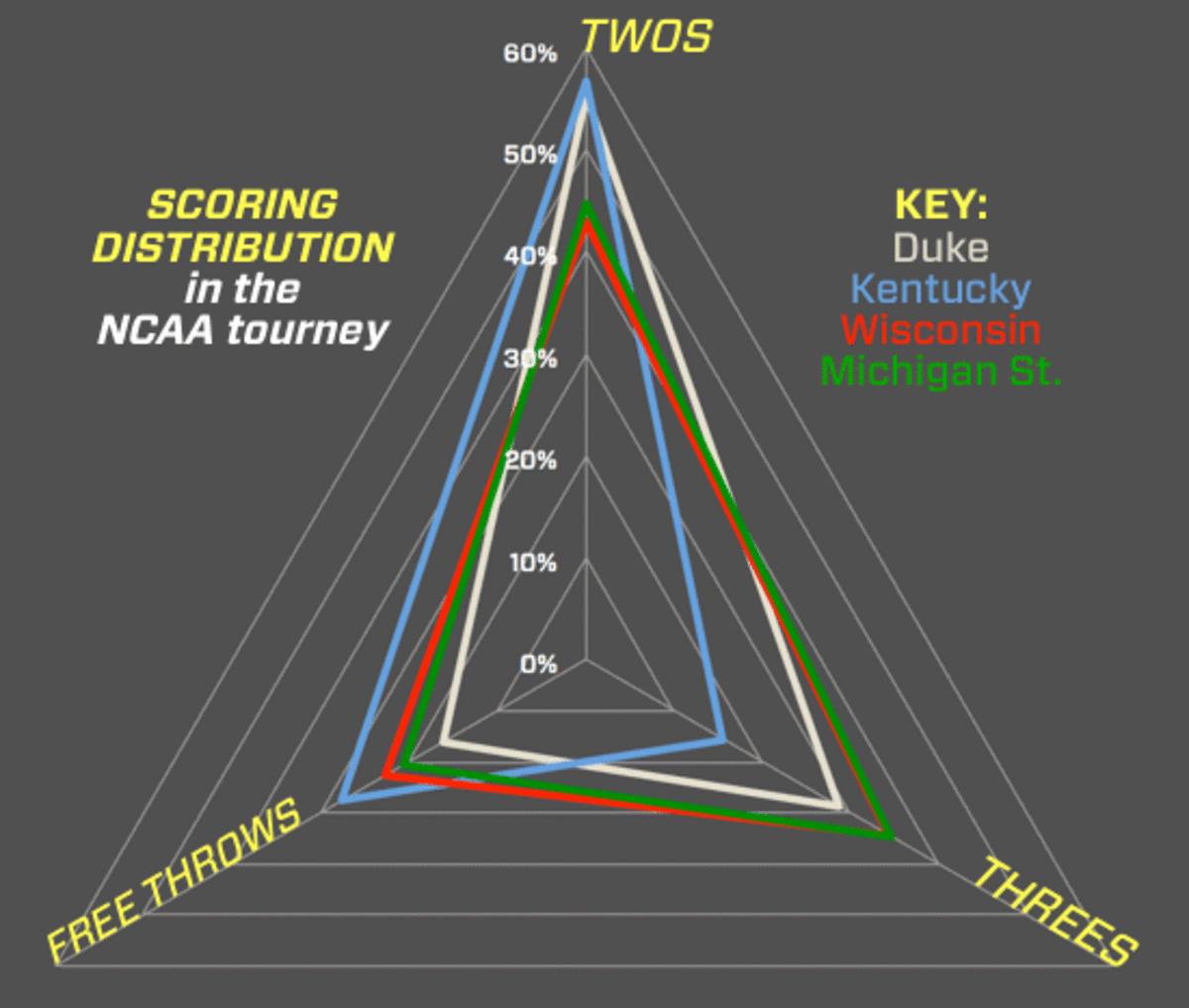Final Four Power Rankings: In Indy, Duke will be UK's primary challenger

INDIANAPOLIS—The first datelined Power Rankings of the season are also the final Power Rankings of the season. Thanks for nerding out along with me, for tolerating all the charts and the times when your team's logo appeared but the blurb was disrespectfully about something other than your team. It's been a good run. Just like last week, teams are ranked in order of most to least likely to win the national championship, with bracket difficulty taken into consideration.
1. Kentucky Wildcats
No. 1 Midwest, vs. No. 1 Wisconsin
The Final Four team with the most post-up heavy offense in tournament play isn't the one with Jahlil Okafor at center. It's Kentucky. The Wildcats have been sending 26.5% of their possessions through the post, either on shot attempts or pass-outs, according to Synergy Sports Technology. They've also been more efficient in the post than any of the other teams in Indy:

The reason Kentucky is No. 1 on that chart is its growing reliance on 6'11" freshman center Karl-Anthony Towns. He used 23.3% of the Wildcats' possessions during the regular season, but has emerged as their go-to guy in the NCAA tournament, using 28.3%, with a team-high offensive rating of 127.2. Here's the full breakdown of Kentucky's offensive distribution, calculated from kenpom.com's enhanced box scores:
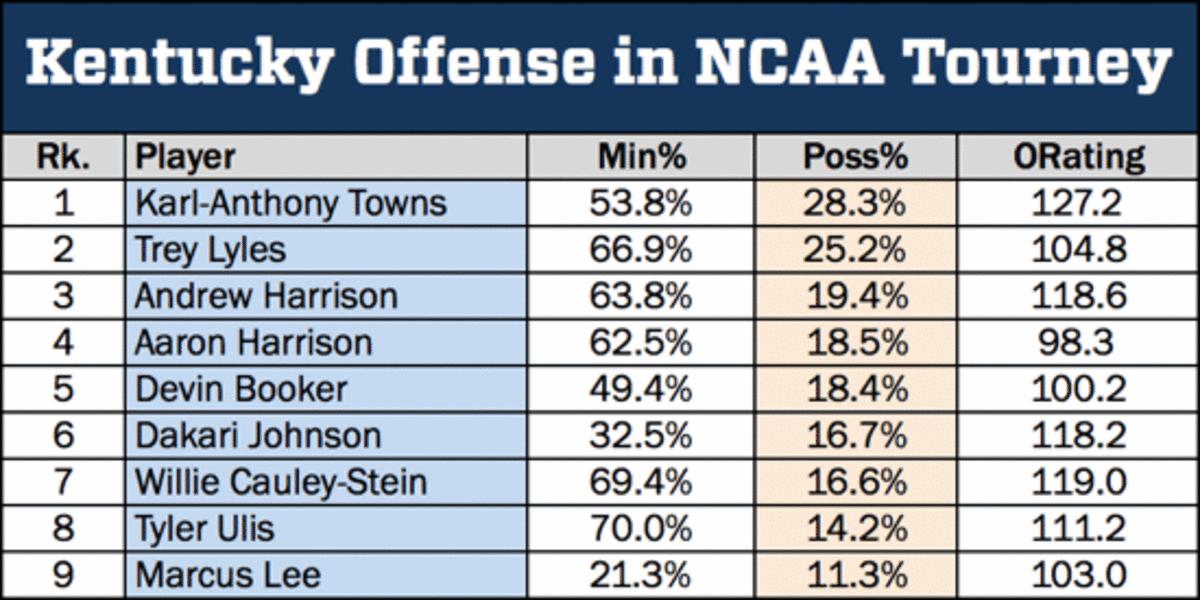
Towns's scoring role has ballooned as he's shifted more of his game to the blocks. In the 34 games leading up to the NCAA tournament, post-ups accounted for 37.1% of Towns' offense, but in the tourney, they've accounted for 75.6%. He's been posting up at a much higher ran than Duke's Jahlil Okafor or Wisconsin's Frank Kaminsky, and whereas Okafor was the dominant post player of the regular season, Towns may be stealing that role in the NCAAs:
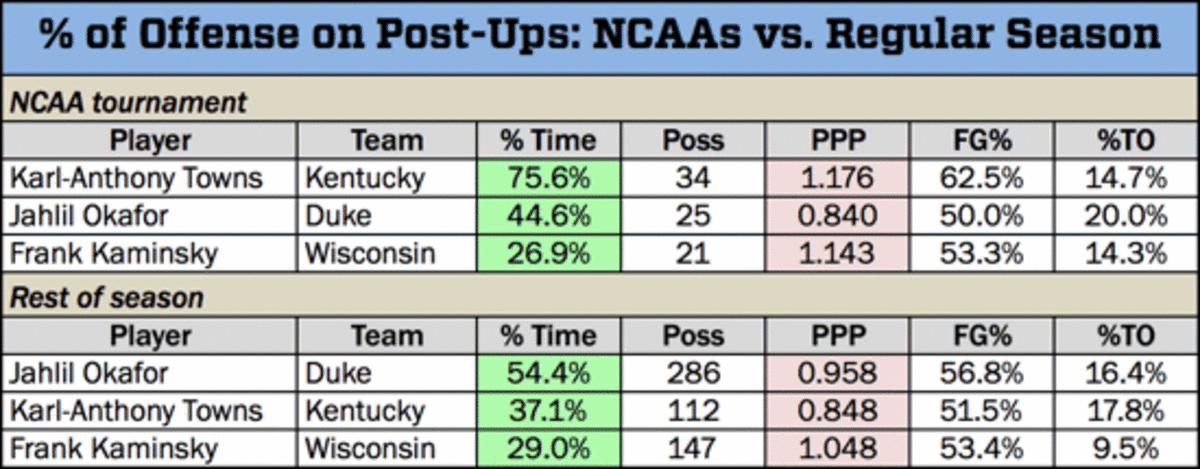
2. Duke Blue Devils
No. 1 South, vs. No. 7 Michigan State
Something I did not expect to be writing as of a few weeks ago: The Blue Devils reached the Final Four on the strength of their defense, which held four straight tourney opponents under 0.900 PPP, and defended Gonzaga better than any Zags opponent this season. (The offensive black hole that is Houston's NRG Stadium may have had an assist in that, but either way, it was impressive D.)
Crashing the Dance's Andy Cox provided Duke's Net Efficiency Margin data for all of 2014-15, and it shows that the Blue Devils, of late, are playing their best defense of the season—but not their best offense. (NEM is a measure of how much better or worse a team plays than what a D-I average team would be expected to do in the same situations, so it takes into account opponent quality and game location.)
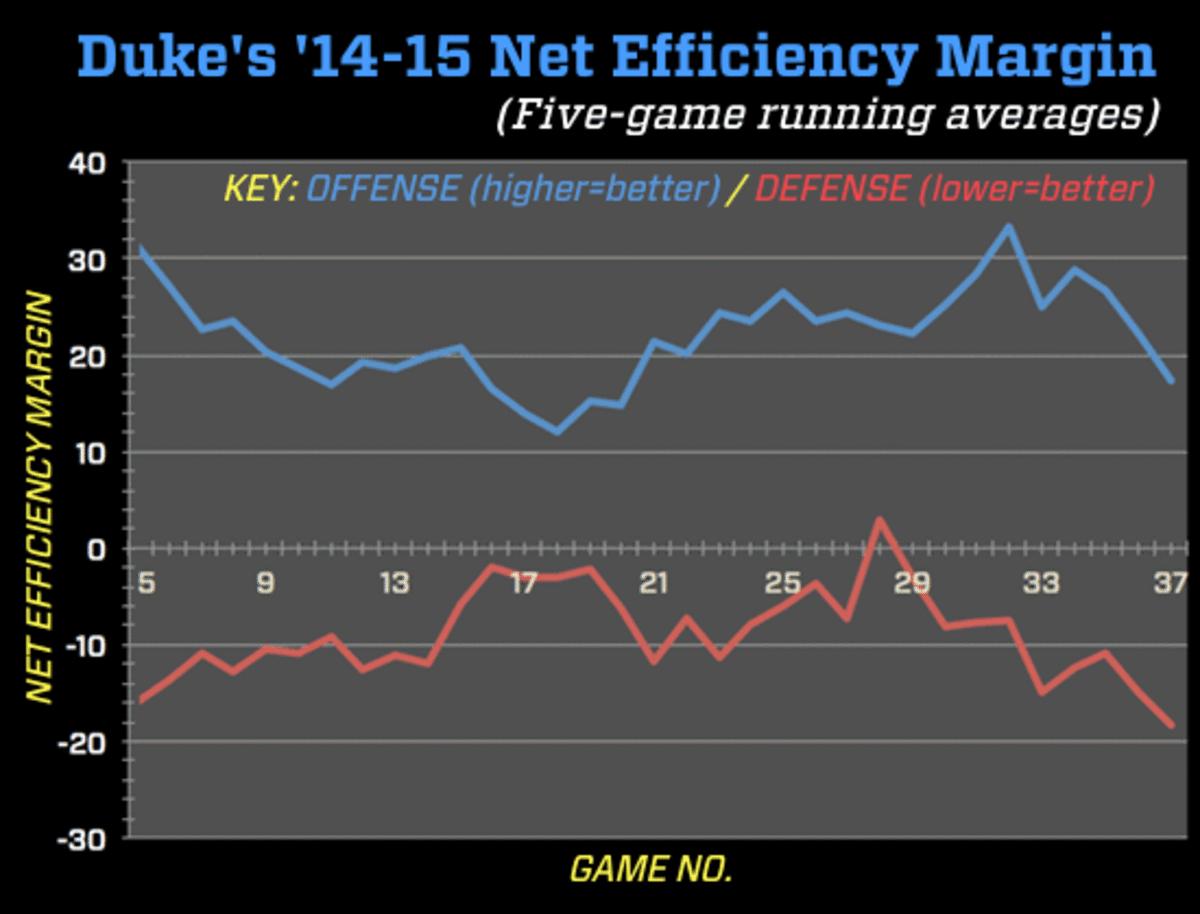
In terms of overall NEM, Kentucky is the hottest team in the tournament largely due to its annihilation of West Virginia in the Sweet 16. But Duke is in the vicinity of the Wildcats, and both Duke and Wisconsin were playing at a higher level than Kentucky in the lead-up to the NCAAs. This suggests than an upset by the Badgers (in the Final Four) or the Blue Devils (in the title game) isn't all that unrealistic.
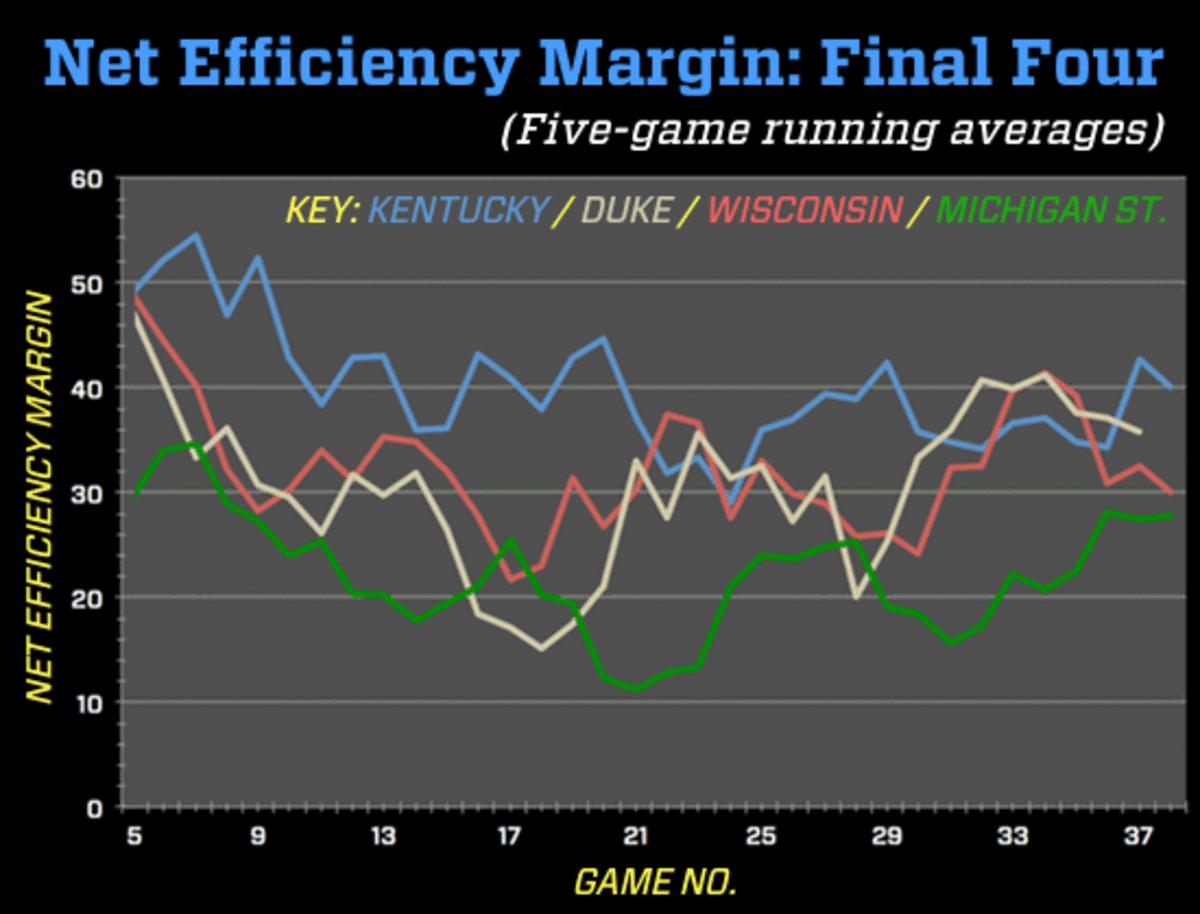
3. Wisconsin Badgers
No. 1 West, vs. No. 1 Kentucky
This is Sam Dekker's tournament, and everyone else is just playing in it. Wisconsin's junior small forward has, by a HUGE margin, been the most efficient, high-usage scorer in the NCAAs, averaging 1.419 PPP according to Synergy. He's committed just two turnovers in 137 minutes and has been the most effective shooter on any team left in the field.
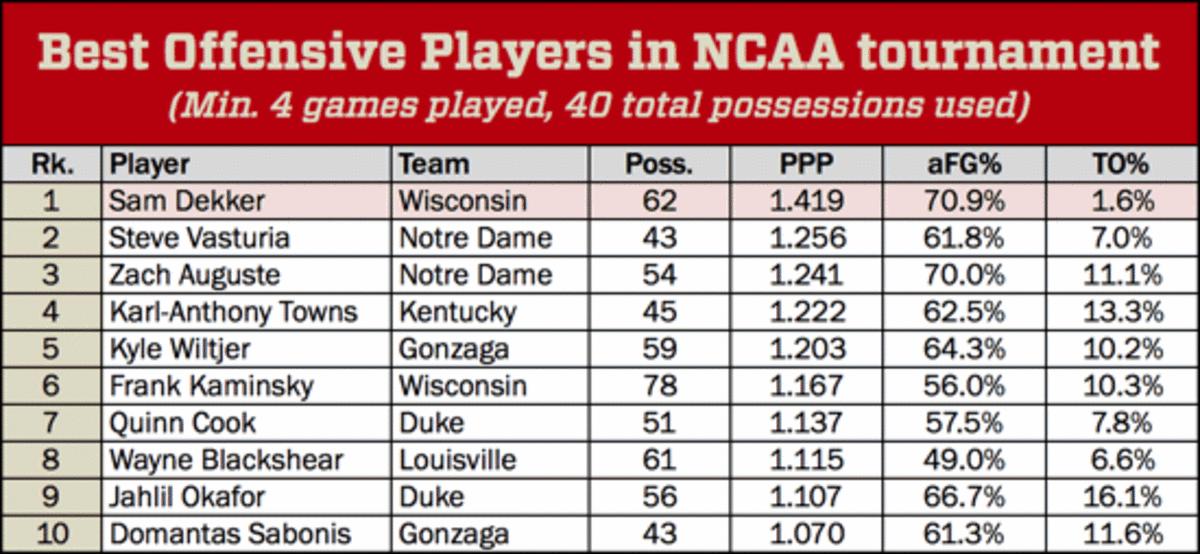
While watching Dekker go off against Arizona in the Elite Eight, I flashed back to a conversation I had with him and Nigel Hayes in October, while reporting for SI's preview issue. Hayes interjected on a question about Dekker's offseason improvement, saying, "Let me toot Sam's horn a little bit. He's gotten a lot better this year at just taking whatever's there immediately."
"And not second-guessing it," Dekker said. "That was a big thing at the end of last season. I'll be honest that in the Arizona game"—the 2014 Elite Eight win in which he had just seven points in 35 minutes—"I deferred way too much. That was just lack of confidence at the time. Baylor and Arizona were two games where I wished I could have helped our team more. I wouldn't trade what we did for anything, but, having confidence to know you can go out and do things is half the game, or even more than half."
In his rematch with Arizona last week, Dekker scored 27 points. There was no hesitation on his moves. There is no second-guessing in these highlights:
4. Michigan State Spartans
No. 7 East, vs. No. 1 Duke
This screengrab from the Spartans' loss to Duke in November pretty much sums up their defensive dilemma against the Blue Devils' spread-out lineup. To dig or not to dig on Jahlil? To help or not to help? Any false move frees up a shooter:
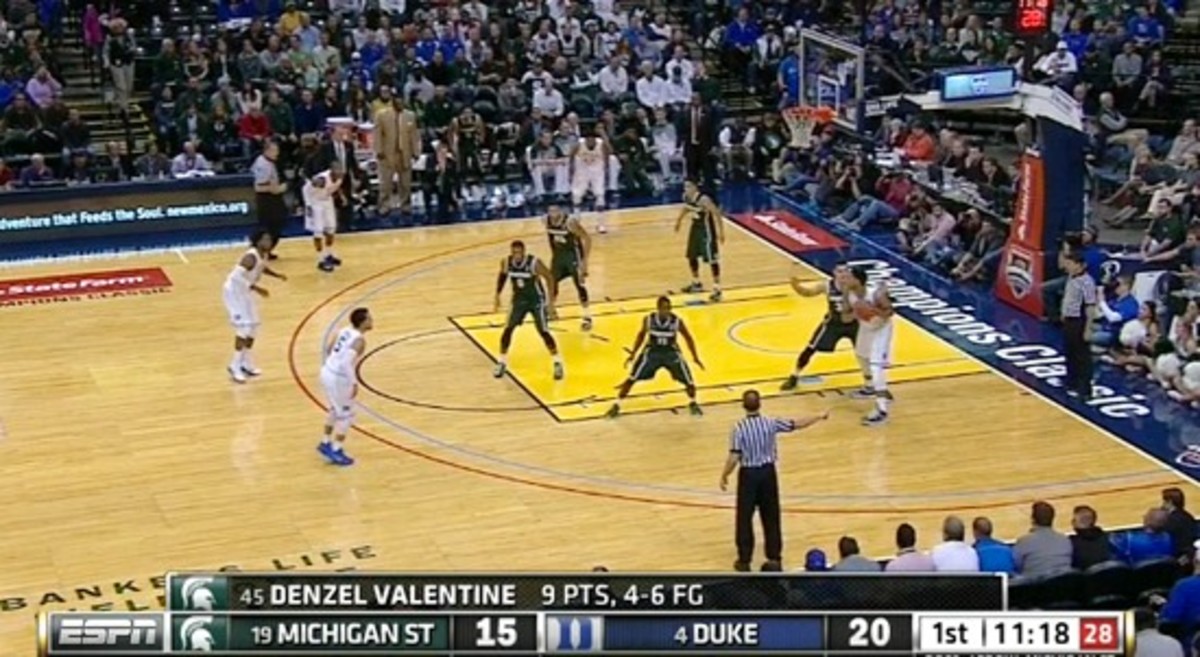
The most surprising thing about the Spartans—other than that they've reached Indy—is that they're the most three-point reliant team left in the bracket. In four tourney games, 34.7% of their scoring has come from threes, and in their Elite Eight win over Louisville 46.0% of their field-goal attempts were from long range.
This radar plot shows the scoring distribution of each Final Four team in the NCAAs; you'll see that Kentucky, which relies on threes for only 15.6% of its points, is essentially the anti-Michigan State:
